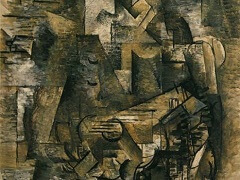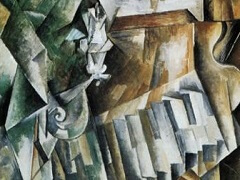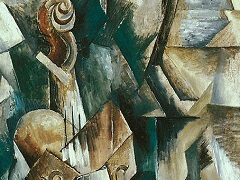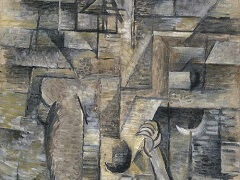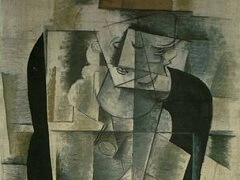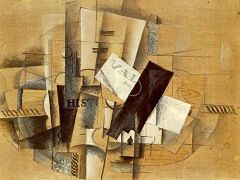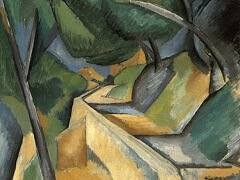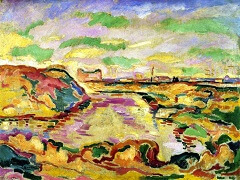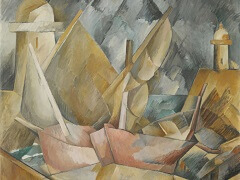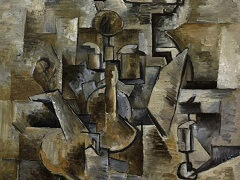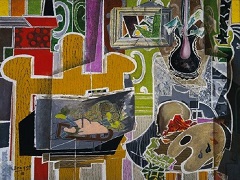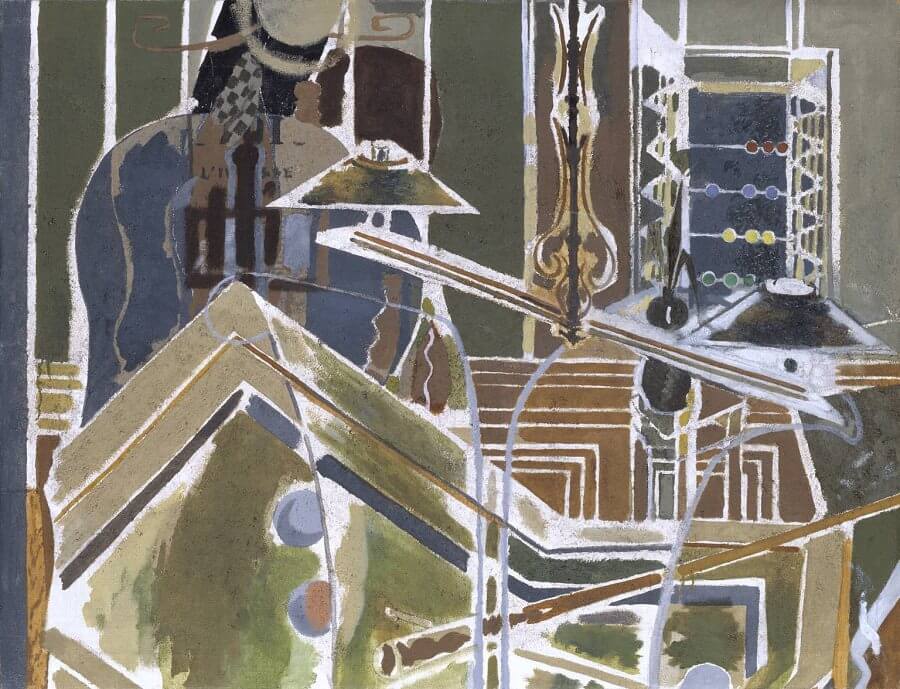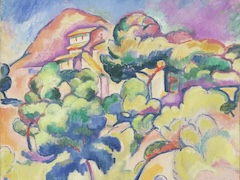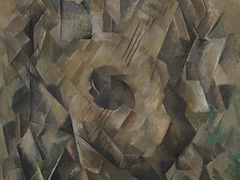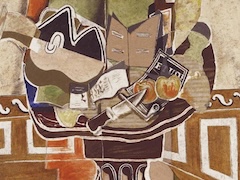Still Life with Playing Cards, 1913 by Georges Braque
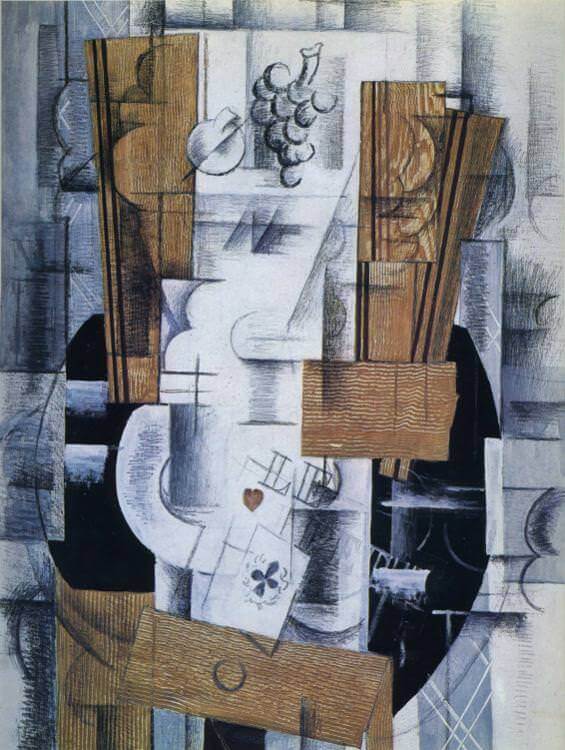
Braque's return to Paris in 1907 coincided with a Cezánne retrospective at the Salon d'Automne, and Picasso's work on Les Demoiselles d'Avignon in his Rue Ravignan studio. In December 1907, Braque began his own monumental nude, worked on heavily throughout the winter, but not so expressive and 'primitive' as Picasso's. He went back to the l'Estaque in the summer, and now painted a series of austere landscapes, muted in color and composed of rectangular slabs and blocks (hills and houses) and cylinders (trees). All were rejected by the Salon d'Automne of 1908. Like Paul Cezánne before him, Braque then turned to still lifes, painting pitchers, cups, fruit, cards, newspapers, guitars, violins, etc. in an increasingly fragmented way. Colors became muted, muddy even, though Braque usually breaks up the planes into facets of brush strokes that add an an air of ambiguity: quite where these elemental shapes exist in the third dimension is never clear. Gradually this 'analytical' period of Cubism became exhausted: the subjects had dissolved into abstract medleys of dull gray and brown planes - 'interesting' work but not attractive nor offering obvious avenues of development. In July 1912, Braque joined forces with Picasso and hammered out a new style: 'synthetic' Cubism. Just as he had dropped Cezánne's analysis of form in the Landscape at La Ciotat, so Braque now divorced color from form, and made collages of recognizable cutouts, the cutouts being painted, or simply strips of wallpaper, oil cloth or newspaper glued in place.
So in this painting where we see a round card table, the odd drawing of a card, a bunch of grapes and bit of lettering, and various panels, sometimes patterned or left a bluish gray. Perhaps the upright shapes are players, or shapes borrowed from violins, etc. It hardly matters: the work is largely abstract and to appreciate the piece we have to like its balance of elements, their staccato rhythms, and effectiveness of the decoration, simple but not boring.

